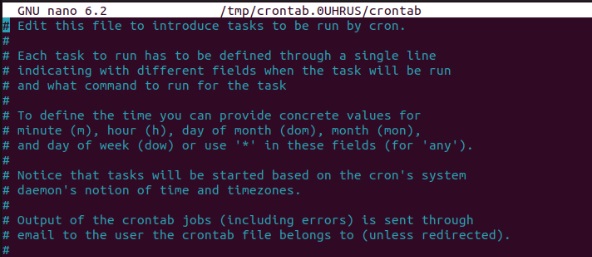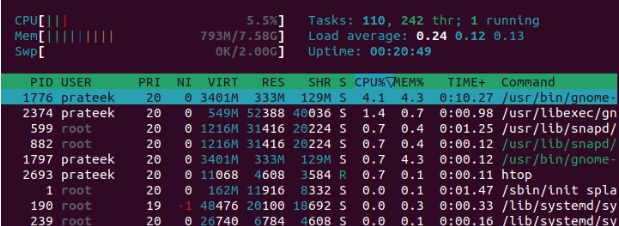Cron is a time-based job scheduler that allows you timetable jobs and run manuscripts occasionally at a set time, day, or interval. In addition, these jobs are called cron work. With cron work, you can successfully carry out recurring jobs like clearing cache, synchronizing data, system backup and upkeep, etc.
These cron work also have various other attributes like command automation, which can dramatically minimize the opportunities of human errors. Nonetheless, numerous Linux customers encounter several issues while establishing a cron work. So, this article supplies examples of just how to establish a cron work in Linux.
Just how To Establish a Cron Job
To start with, you must learn about the crontab documents to set up a cron job in Linux. You can access this file to view information regarding existing cron tasks and modify it to introduce new ones. Before directly opening the crontab documents, utilize the below command to examine that your system has the cron utility:
If it does not supply a result as displayed in the provided picture, mount cron using:
sudo apt-get mount cron -y
Currently, confirm that the cron service is active by using the command as adheres to:


As soon as you are done, edit the crontab to begin a new cron job:
The system will certainly ask you to pick a particular text editor. For instance, we utilize the nano editor by entering’ 1 as input. Nonetheless, you can pick any one of the editors because the element influencing a cron job is its format, which we’ll clarify in the next actions.
After picking an editor, the crontab documents will open up in a new window with fundamental guidelines displayed on top.


Finally, append the complying with crontab expression in the documents:
Right here, each corresponding asterisk(*) indicates mins, hours, daily, weekly, and regular monthly. This specifies every element of time to ensure that the cron job can execute efficiently at the scheduled time. In addition, replace the terms path and manuscript with the course containing the target manuscript and the manuscript’s name, respectively.
Time Style to Arrange Cron Jobs
As the moment layout reviewed in the above command can be complicated, let’s review its style in short:
- In the Minutes area, you can get in values in the variety 0- 59, where 0 and 59 stand for the mins visible on a clock. For an input number, like 9, the work will perform at the 9 th min every hour.
- For Hours , you can input values ranging from 0 to 23 For instance, the worth for 2 PM would be’ 14′
- The Day of the Month can be anywhere in between 1 and 31, where 1 and 31 once more indicate the first and last Day of the Month. For worth 17, the cron work will certainly operate on the 17 th Day of each month.
- Instead of Month , you can enter the array 1 to 12, where 1 means January and 12 means December. The task will be executed just throughout the Month you specify below.
Note: The value ‘*’ means every acceptable value. As an example, if ‘*’ is utilized in place of the mins’ area, the task will certainly run every minute of the defined hour.
For example, below is the expression to set up a cron job for 9: 30 AM every Tuesday:
For example, to establish a cron task for 5 PM on weekends in April:
0 17 * 4 0 , 6 – 7 / course / manuscript
As the above command demonstrates, you can utilize a comma and a dash to provide multiple values in an area. So, the upcoming area will discuss the use of numerous operators in a crontab expression.
Arithmetic Operators for Cron Jobs
Regardless of your experience in Linux, you’ll typically require to automate work to run two times a year, thrice a month, and much more. In this case, you can utilize operators to modify a single cron work to perform at different times.
- Dash(-): You can define a range of worths using a dash. For instance, to set up a cron job from 12 AM to 12 PM, you can go into * 0- 12 * * */ path/script.
- Forward Reduce(/): A lower assists you split a field’s acceptable values right into numerous worths. For example, to make a cron work run quarterly, you’ll get in * * */ 3 */ path/script.
- Comma(,) : A comma divides two various values in a solitary input area. For instance, the cron expression for a task to be performed on Mondays and Wednesdays is * * * * 1, 3/ path/script.
- Asterisk(*): As discussed over, the asterisk stands for all worths the input field approves. It suggests an asterisk instead of the Month’s field will arrange a cron job for every single Month.
Commands to Take Care Of a Cron Task
Managing the cron work is likewise an important facet. For this reason, right here are a few commands you can make use of to list, edit, and erase a cron work:
- The l option is utilized to present the list of cron work.
- The r alternative gets rid of all cron work.
- The e choice modifies the crontab data.
All the users of your system get their different crontab documents. Nevertheless, you can likewise carry out the above operations on their files by including their username in between the commands– crontab -u username [options]
A Quick Wrap-up
Executing recurring tasks is a time-intensive procedure that decreases your performance as a manager. Cron work let you automate jobs like running a script or commands at a certain time, lowering redundant workload. Thus, this post adequately describes exactly how to develop a cron task in Linux. Furthermore, we oriented the correct usage of the time layout and the math operators making use of proper instances.


